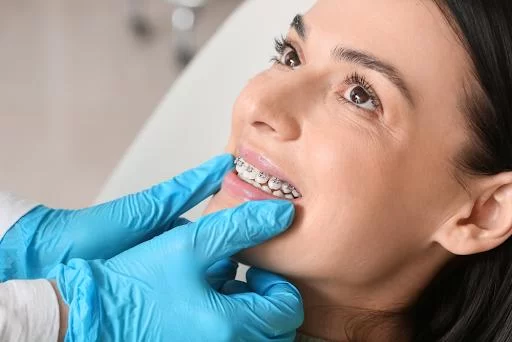
How to Treat Gum Infection During Orthodontic Treatment: Effective Tips and Solutions
- Understanding Gum Infection During Orthodontics
- Common Symptoms of Gum Infection with Braces
- Treatment Options for Gum Infection During Orthodontic Treatment
- Prevention Tips to Avoid Gum Infection with Braces
- When to Seek Professional Help for Gum Infection
Understanding Gum Infection During Orthodontics
Orthodontic treatment can bring many benefits, but it also comes with its own set of challenges, including the risk of gum infections. When you have braces, your oral hygiene routine becomes more complicated, and the brackets and wires can trap food particles and bacteria, leading to irritation and infection in the gums. Gum infections, if left untreated, can result in painful inflammation, swelling, and even tooth loss.
So, what exactly causes gum infections during orthodontic treatment? The main culprits are poor oral hygiene, which allows plaque to build up around the braces, and the difficulty of cleaning around metal components of your braces. Plaque buildup leads to bacteria growth, which can cause gingivitis or more severe periodontitis if not addressed.
Common Symptoms of Gum Infection with Braces
Recognizing the signs of a gum infection early is crucial for effective treatment. Some common symptoms to watch for include:
- Red, swollen, or bleeding gums
- Persistent bad breath (halitosis)
- Pain or discomfort around the braces and gums
- Gums that are tender to the touch or feel inflamed
- Loose teeth (in severe cases)
If you notice any of these symptoms, it’s important to take action immediately to prevent the infection from worsening.
Treatment Options for Gum Infection During Orthodontic Treatment
When it comes to treating gum infection during orthodontic treatment, there are several approaches to consider. Depending on the severity of the infection, here are some effective treatment options:
1. Proper Oral Hygiene Practices
The most essential step in treating gum infection is maintaining excellent oral hygiene. This includes brushing your teeth thoroughly after every meal with a soft-bristled toothbrush and fluoride toothpaste. Don’t forget to floss carefully around the braces using specialized floss threaders, and use an antimicrobial mouthwash to kill bacteria and reduce inflammation.
2. Warm Saltwater Rinses
One simple yet effective treatment is rinsing with warm saltwater. This can help reduce swelling and fight infection by promoting healing. Mix one teaspoon of salt into a glass of warm water and rinse your mouth gently for 30 seconds.
3. Antibacterial Gels or Ointments
In some cases, using an over-the-counter antibacterial gel or ointment directly on the affected area can provide relief. Products containing chlorhexidine are commonly recommended to help control the infection.
4. Professional Cleaning
If the infection is severe, a professional cleaning from your dentist or orthodontist might be necessary. This will help remove plaque buildup and address any areas that are particularly difficult to clean on your own.
Prevention Tips to Avoid Gum Infection with Braces
Preventing gum infection during orthodontic treatment is much easier than treating it. Here are a few simple prevention tips to help you keep your gums healthy:
1. Brush and Floss Regularly
Brushing your teeth at least twice a day and flossing at least once a day is vital. Make sure to use a fluoride toothpaste and an orthodontic toothbrush that can clean around the brackets effectively.
2. Use an Interdental Brush
Interdental brushes are designed to clean between the brackets and wires. These are often more effective than traditional floss for cleaning in these hard-to-reach areas.
3. Avoid Sugary Foods
Sticky or sugary foods can contribute to plaque buildup around the braces, so it’s best to avoid them whenever possible. If you do consume sugary foods, make sure to brush your teeth right away.
When to Seek Professional Help for Gum Infection
While most gum infections can be managed with proper care, there are certain situations when you should seek professional help:
- If the infection doesn’t improve after following the recommended oral care routine
- If you experience excessive pain or swelling that doesn’t subside
- If you notice pus around the gums or have a fever
In these cases, it’s important to visit your orthodontist or dentist promptly to address the infection and prevent further complications.
Gum infection during orthodontic treatment is a common concern, but with proper care and attention, it’s possible to manage and even prevent these infections. By maintaining a good oral hygiene routine, staying on top of your regular checkups, and seeking treatment at the first sign of infection, you can ensure that your braces treatment goes smoothly and that your gums stay healthy.
Interested in learning more about braces care and oral health? Visit Dentistry Toothtruth for expert advice, tips, and resources on maintaining a healthy smile during orthodontic treatment!







 Worcester Dentist - Union Dental - MA4.0 (218 review)
Worcester Dentist - Union Dental - MA4.0 (218 review) Scott Silverman, MD3.0 (6 review)
Scott Silverman, MD3.0 (6 review) Dental365 - Bellmore4.0 (318 review)
Dental365 - Bellmore4.0 (318 review) Bay Area Kids Dentist Sunnyvale4.0 (135 review)
Bay Area Kids Dentist Sunnyvale4.0 (135 review) LAKE VISTA DENTISTRY4.0 (207 review)
LAKE VISTA DENTISTRY4.0 (207 review) Southside Orthodontics - Your Colonial Heights and Chesterfield Orthodontist4.0 (274 review)
Southside Orthodontics - Your Colonial Heights and Chesterfield Orthodontist4.0 (274 review) The Importance of Oral Health Education During Pregnancy for a Healthy Pregnancy
The Importance of Oral Health Education During Pregnancy for a Healthy Pregnancy Best Tips for Brushing Your Teeth Properly for Healthy Gums: Essential Techniques for Oral Health
Best Tips for Brushing Your Teeth Properly for Healthy Gums: Essential Techniques for Oral Health Why Skipping Dental Checkups Can Lead to Bigger Oral Health Problems
Why Skipping Dental Checkups Can Lead to Bigger Oral Health Problems Advantages of Porcelain Dental Restorations
Advantages of Porcelain Dental Restorations How Can Diabetes Cause Tooth and Gum Problems? Preventing and Managing Oral Health Issues
How Can Diabetes Cause Tooth and Gum Problems? Preventing and Managing Oral Health Issues Healthy Habits for Promoting Good Oral Health and Hygiene: Tips for a Healthy Smile
Healthy Habits for Promoting Good Oral Health and Hygiene: Tips for a Healthy Smile